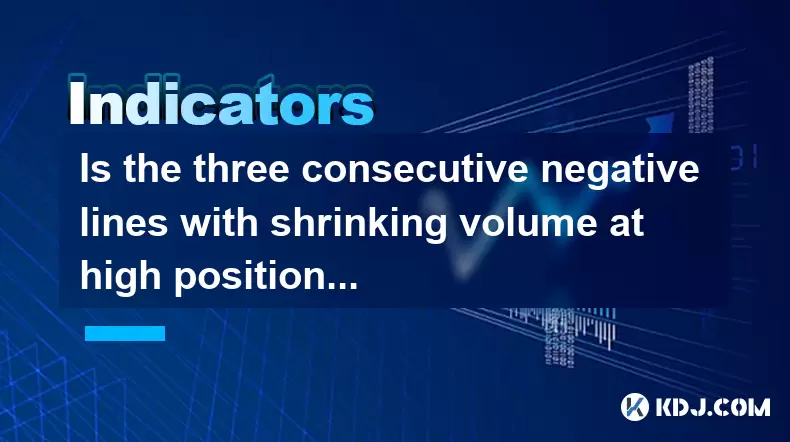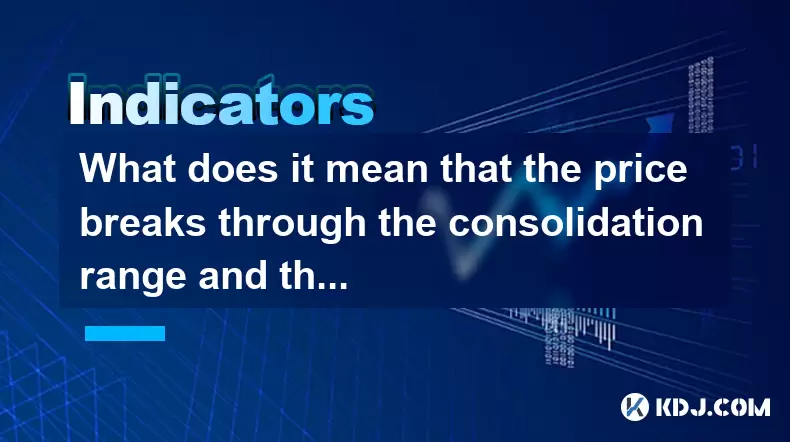-
 Bitcoin
Bitcoin $117900
0.31% -
 Ethereum
Ethereum $3766
0.28% -
 XRP
XRP $3.176
-0.31% -
 Tether USDt
Tether USDt $1.000
0.00% -
 BNB
BNB $795.6
1.51% -
 Solana
Solana $186.8
-1.09% -
 USDC
USDC $0.9999
-0.01% -
 Dogecoin
Dogecoin $0.2353
-1.33% -
 TRON
TRON $0.3226
1.49% -
 Cardano
Cardano $0.8172
-1.08% -
 Sui
Sui $4.178
3.06% -
 Hyperliquid
Hyperliquid $43.05
-3.39% -
 Stellar
Stellar $0.4367
-0.57% -
 Chainlink
Chainlink $18.62
1.47% -
 Hedera
Hedera $0.2828
6.63% -
 Bitcoin Cash
Bitcoin Cash $584.7
5.65% -
 Avalanche
Avalanche $24.81
2.53% -
 Litecoin
Litecoin $112.8
-0.88% -
 UNUS SED LEO
UNUS SED LEO $8.975
-0.08% -
 Shiba Inu
Shiba Inu $0.00001395
-1.07% -
 Toncoin
Toncoin $3.285
-1.05% -
 Ethena USDe
Ethena USDe $1.001
0.01% -
 Polkadot
Polkadot $4.123
0.76% -
 Uniswap
Uniswap $10.49
-0.18% -
 Monero
Monero $326.5
0.14% -
 Dai
Dai $0.9999
-0.02% -
 Bitget Token
Bitget Token $4.576
0.34% -
 Pepe
Pepe $0.00001247
-1.55% -
 Cronos
Cronos $0.1400
3.77% -
 Aave
Aave $295.1
-0.73%
Is the three consecutive negative lines with shrinking volume at high positions a signal that the main force has finished shipping?
A pattern of three consecutive negative candlesticks with shrinking volume at high positions may signal the main force has finished distributing, hinting at potential price consolidation or reversal.
Jun 14, 2025 at 09:56 am

Understanding the Concept of Three Consecutive Negative Lines
In cryptocurrency trading, three consecutive negative lines refer to a situation where an asset's price chart shows three successive candlesticks with closing prices lower than their opening prices. This pattern typically indicates bearish sentiment in the market. When this occurs at high positions—meaning after a significant upward movement—it may suggest a potential reversal or correction phase.
The shrinking volume accompanying these negative lines is particularly important. Volume represents the number of assets traded within a given time frame. A reduction in volume during downward price action can imply that selling pressure is not as strong as it might seem, or that major players have already completed their distribution activities.
What Does "Main Force Has Finished Shipping" Mean?
In the context of crypto markets, the phrase "main force has finished shipping" is often used to describe a scenario where large institutional investors or whales (often referred to as the "main force") have completed their process of offloading large amounts of an asset onto retail traders. This is also known as distribution.
During such phases, these large holders sell their accumulated holdings gradually to avoid causing a sharp drop in price. The end of this process is crucial for traders because once the main force stops selling, the downward pressure on the price may ease, potentially leading to consolidation or even a reversal depending on other market conditions.
Identifying the Pattern: Key Characteristics
To determine whether the three consecutive negative lines with shrinking volume at high positions truly signal the completion of distribution by the main force, several factors must be analyzed:
- Price Position: The pattern should occur after a substantial uptrend, indicating that the asset has reached a level where profit-taking or distribution becomes likely.
- Candlestick Structure: Each of the three candles should close lower than its open, showing consistent bearish control over those periods.
- Volume Trend: Volume should decrease progressively across the three candles. If the first red candle has high volume but subsequent ones show declining volume, it suggests waning interest from sellers.
- Market Context: Consider broader market sentiment and any news events that could influence short-term price movements.
These characteristics help distinguish between a temporary pullback and a more meaningful shift in supply-demand dynamics.
How Institutional Players Operate During Distribution
Large entities like institutional investors or whales cannot unload massive positions quickly without significantly affecting the price. Hence, they distribute their holdings over time through methods such as:
- Spoofing and Layering: Placing fake orders to create artificial demand or supply.
- Iceberg Orders: Breaking down large orders into smaller chunks that don’t appear fully on the order book.
- Using Multiple Exchanges: Distributing sales across various platforms to avoid detection.
When these strategies are nearing completion, subtle signs like three consecutive negative lines with shrinking volume at high positions may emerge. It’s often a sign that most of the heavy selling has been done, and the remaining pressure comes from panic selling or automated stop-loss triggers rather than coordinated large-scale distribution.
Technical Confirmation Tools for Traders
For retail traders observing this pattern, several technical tools can provide additional confirmation regarding whether the main force has indeed stopped distributing:
- On-Balance Volume (OBV): Declining OBV during falling prices confirms selling pressure, while flattening OBV suggests diminishing seller momentum.
- Order Book Analysis: Checking the depth of buy and sell walls can reveal whether large limit orders are still present, which may indicate ongoing distribution.
- Volume Profile: Identifies price levels with the highest trading activity. If recent declines occur outside of previously established high-volume zones, it may suggest reduced institutional participation.
- Smart Money Concepts (SMC): Techniques like identifying fair value gaps, order blocks, and liquidity sweeps help assess whether big players are still active in the market.
These tools help contextualize the three consecutive negative lines with shrinking volume at high positions, offering deeper insight into whether the decline is part of a larger bearish trend or simply a pause before another leg up.
Common Misinterpretations and How to Avoid Them
Traders often misinterpret patterns like this due to emotional bias or lack of context. Some common mistakes include:
- Assuming the pattern always signals a reversal without considering broader trends.
- Ignoring macroeconomic or regulatory developments that could override technical signals.
- Failing to cross-reference with on-chain metrics such as exchange inflows/outflows or whale transactions.
To avoid these pitfalls, traders should use multiple forms of analysis—technical, fundamental, and on-chain—to build a comprehensive view before making decisions based solely on candlestick patterns.
Frequently Asked Questions
Q: Can this pattern appear in both bullish and bearish markets?
Yes, the three consecutive negative lines with shrinking volume at high positions can appear in any market condition. However, its significance varies depending on the overall trend. In a bullish market, it may represent a healthy correction, while in a bearish environment, it might confirm continued weakness.
Q: What timeframes are most reliable for spotting this pattern?
While the pattern can appear on all timeframes, it is most reliable on higher timeframes such as the 4-hour (H4) or daily (D1). These frames filter out noise and offer more accurate readings of institutional behavior.
Q: Should I place trades immediately upon seeing this pattern?
No, it’s advisable to wait for further confirmation before entering trades. Look for signs like a bullish engulfing candle, a break above key resistance, or positive divergence in oscillators before taking action.
Q: Are there similar patterns that convey the same message?
Yes, similar patterns include the Three Black Crows, Bearish Harami, and Shooting Star followed by two red candles. While each has unique nuances, they all suggest weakening buyer momentum and possible exhaustion of the uptrend.
Disclaimer:info@kdj.com
The information provided is not trading advice. kdj.com does not assume any responsibility for any investments made based on the information provided in this article. Cryptocurrencies are highly volatile and it is highly recommended that you invest with caution after thorough research!
If you believe that the content used on this website infringes your copyright, please contact us immediately (info@kdj.com) and we will delete it promptly.
- Token Unlocks and Altcoin Mania: A Wild Week Ahead!
- 2025-07-28 04:30:12
- Hayden Davis's LIBRA Token: From Investment Promise to Memecoin Mayhem
- 2025-07-28 04:30:12
- AI Tokens on CoinMarketCap: The New Millionaire Maker?
- 2025-07-28 04:35:18
- BONK Price, Solana Meme Coin Mania, and PENGU Pressure: What's the Haps?
- 2025-07-28 03:50:12
- Bitcoin, Ruvi AI, and CoinMarketCap: Navigating the Future of Crypto
- 2025-07-28 02:30:12
- Ethereum ETF Mania & BNB's Breakout: A New Yorker's Crypto Take
- 2025-07-28 03:50:12
Related knowledge

What signal does the ROC send when it rises rapidly from a low level and breaks through the zero axis?
Jul 27,2025 at 10:15am
Understanding the Rate of Change (ROC) IndicatorThe Rate of Change (ROC) is a momentum-based oscillator used in technical analysis to measure the perc...

What does it mean that the rebound is blocked after the moving average is arranged in a short position for the first time?
Jul 26,2025 at 10:51am
Understanding the Short-Term Moving Average ConfigurationWhen traders refer to a 'short position arrangement' in moving averages, they are describing ...

What does it mean that the ZIGZAG low point is raised and the high point breaks through the previous peak?
Jul 28,2025 at 03:28am
Understanding the ZIGZAG Indicator in Cryptocurrency TradingThe ZIGZAG indicator is a technical analysis tool widely used in cryptocurrency trading to...

What does it mean that the parabolic indicator and the price break through the previous high at the same time?
Jul 26,2025 at 07:22pm
Understanding the Parabolic Indicator (SAR)The Parabolic SAR (Stop and Reverse) is a technical analysis tool developed by J. Welles Wilder to identify...

What does it mean that the price breaks through the consolidation range and the moving average diverges upward?
Jul 28,2025 at 03:16am
Understanding the Consolidation Range in Cryptocurrency MarketsIn cryptocurrency trading, a consolidation range refers to a period where the price of ...

What does it mean that the upper and lower tracks of the Bollinger Band open upward at the same time?
Jul 27,2025 at 02:49pm
Understanding the Bollinger Band StructureThe Bollinger Band is a widely used technical analysis tool developed by John Bollinger. It consists of thre...

What signal does the ROC send when it rises rapidly from a low level and breaks through the zero axis?
Jul 27,2025 at 10:15am
Understanding the Rate of Change (ROC) IndicatorThe Rate of Change (ROC) is a momentum-based oscillator used in technical analysis to measure the perc...

What does it mean that the rebound is blocked after the moving average is arranged in a short position for the first time?
Jul 26,2025 at 10:51am
Understanding the Short-Term Moving Average ConfigurationWhen traders refer to a 'short position arrangement' in moving averages, they are describing ...

What does it mean that the ZIGZAG low point is raised and the high point breaks through the previous peak?
Jul 28,2025 at 03:28am
Understanding the ZIGZAG Indicator in Cryptocurrency TradingThe ZIGZAG indicator is a technical analysis tool widely used in cryptocurrency trading to...

What does it mean that the parabolic indicator and the price break through the previous high at the same time?
Jul 26,2025 at 07:22pm
Understanding the Parabolic Indicator (SAR)The Parabolic SAR (Stop and Reverse) is a technical analysis tool developed by J. Welles Wilder to identify...

What does it mean that the price breaks through the consolidation range and the moving average diverges upward?
Jul 28,2025 at 03:16am
Understanding the Consolidation Range in Cryptocurrency MarketsIn cryptocurrency trading, a consolidation range refers to a period where the price of ...

What does it mean that the upper and lower tracks of the Bollinger Band open upward at the same time?
Jul 27,2025 at 02:49pm
Understanding the Bollinger Band StructureThe Bollinger Band is a widely used technical analysis tool developed by John Bollinger. It consists of thre...
See all articles

























































































